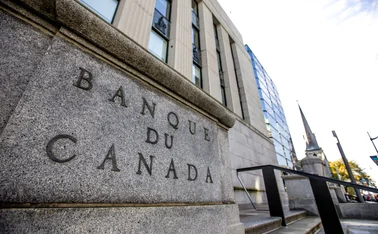
New Zealand central bank holds policy rate
RBNZ says inflation risks have become “more balanced”

The Reserve Bank of New Zealand (RBNZ) monetary policy committee has kept its policy rate at 5.5% for the fifth consecutive time, while toning down the hawkish stance adopted during its previous meeting.
“Core inflation and most measures of inflation expectations have declined, and the risks to the inflation outlook have become more balanced,” the central bank said in a statement today (February 28).
The bank said it remained confident that the current level of its policy rate was restricting demand. However, it said a sustained decline in the tightness of the country’s labour market would be needed before headline inflation could return to the bank’s 1–3% target level.
“The official cash rate needs to remain at a restrictive level for a sustained period of time to ensure this occurs,” the RBNZ said.
The bank has rowed back on its previous statement in November that the policy rate “would likely need to increase further” if inflationary pressures proved stronger than it was then anticipating.
The consumer price index (CPI) rose 4.7% year on year in the final quarter of 2023. This marked a slowing down from the 5.6% recorded during the previous quarter.
One of the first central banks to tighten policy during the current inflation cycle, the RBNZ raised rates by a total of 525 basis points between October 2021 and May 2023.
The bank has maintained its November forecast that CPI would return to within its target band by the end of Q3 2024. It expects inflation to reach the 2% midpoint by Q4 2025.
The RBNZ has lowered its forecast peak for the official cash rate from 5.7% to 5.6%.
The bank said restrictive monetary policy and lower global growth had contributed to slowing aggregate demand. It added that subdued global growth would lead to a further slowdown in import inflation.
However, it also warned of risk factors that could drive inflation. It said heightened geopolitical tensions and extreme weather caused by climate change had led to a rise in global shipping costs.
The RBNZ noted central banks might need to keep policy rates higher for longer to ensure their inflation targets are met.
New Zealand’s GDP unexpectedly shrank by 0.3% on a quarterly basis in Q3 2023. This followed a 0.5% increase during the previous quarter, and a forecast by the central bank that GDP would grow by 0.3% in Q3. Official statistics showed that a slowdown in the manufacturing and construction sectors had contributed to the quarterly decline. On a year-on-year basis, the economy grew 1.3% in Q3.
Sharon Zellner and David Croy, economists at ANZ bank, said in a note that the RBNZ’s statement was not nearly as hawkish as they had anticipated.
However, they added, the surprisingly weak GDP figures for Q3 had persuaded the monetary policy committee that core inflation would soon start to fall more quickly. “The evidence threshold for the RBNZ committee is clearly much higher than we appreciated, so we have reluctantly parked further hikes back in the risk basket, pushing cuts out to mid-2025.”
Only users who have a paid subscription or are part of a corporate subscription are able to print or copy content.
To access these options, along with all other subscription benefits, please contact info@centralbanking.com or view our subscription options here: http://subscriptions.centralbanking.com/subscribe
You are currently unable to print this content. Please contact info@centralbanking.com to find out more.
You are currently unable to copy this content. Please contact info@centralbanking.com to find out more.
Copyright Infopro Digital Limited. All rights reserved.
You may share this content using our article tools. Printing this content is for the sole use of the Authorised User (named subscriber), as outlined in our terms and conditions - https://www.infopro-insight.com/terms-conditions/insight-subscriptions/
If you would like to purchase additional rights please email info@centralbanking.com
Copyright Infopro Digital Limited. All rights reserved.
You may share this content using our article tools. Copying this content is for the sole use of the Authorised User (named subscriber), as outlined in our terms and conditions - https://www.infopro-insight.com/terms-conditions/insight-subscriptions/
If you would like to purchase additional rights please email info@centralbanking.com




